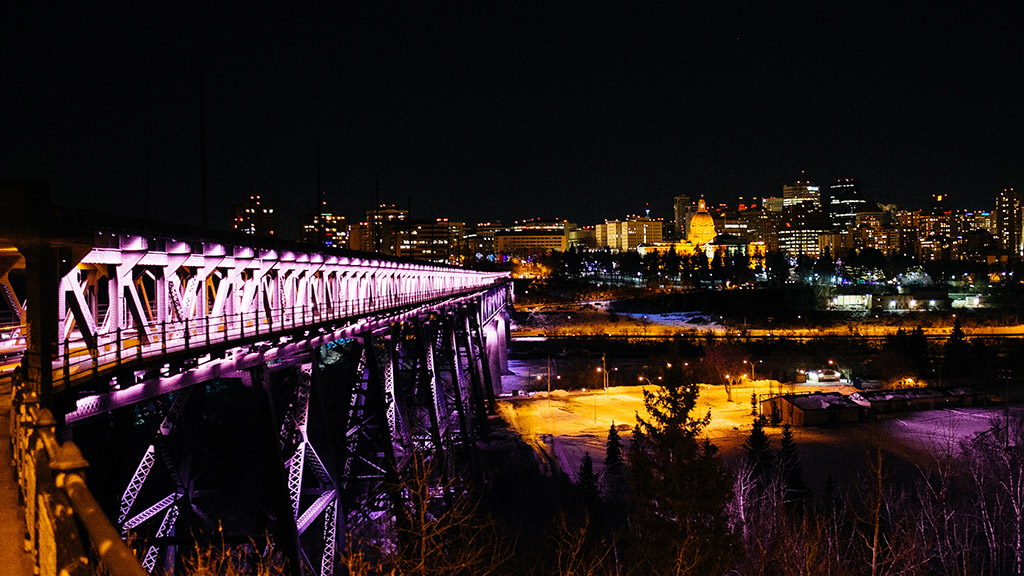The Hobby Hole: Beginner’s guide to riding a motorcycle
The course included technical demonstrations and hands-on exercises, ending with a ride on one of Calgary’s busiest roads.
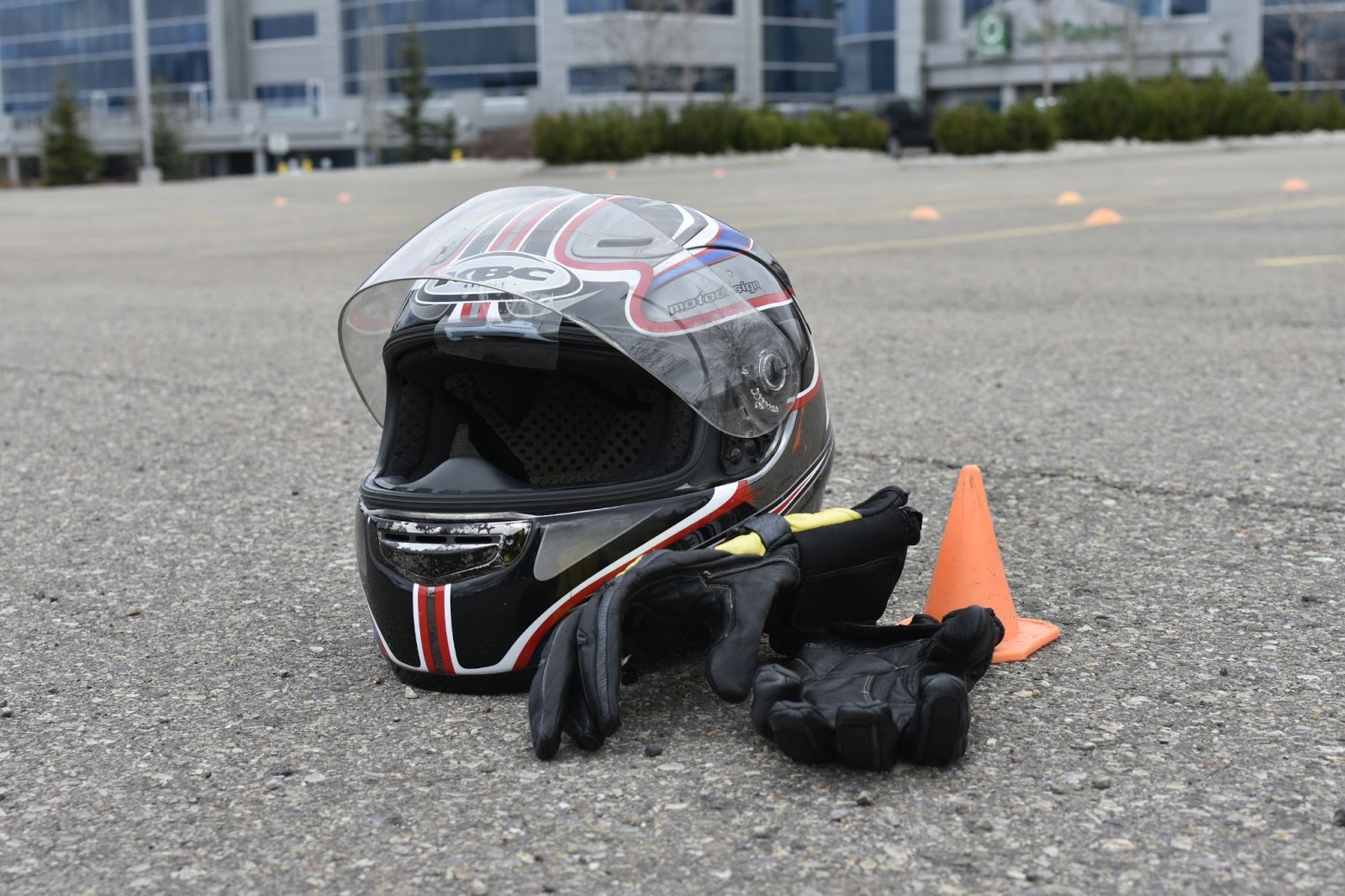 Alexander Cheung
Alexander CheungMotorcycle riding is considered a dangerous sport by many. So dangerous, your mother wouldn’t want you doing it. In a car, you’re surrounded by metal, airbags, and glass, but on a motorcycle, all you have are your wits, your safety gear (helmet, jacket, gloves, pants, boots), and hopefully, the experience needed to stay safe.
Why would you ever want to ride a motorcycle? For myself, riding a motorcycle is a distinct mix of adrenaline and excitement that keeps you coming back for more. It is something you have to try to fully understand!
While motorcycle riding is undeniably dangerous, it can be done safely. However, many of the skills needed to ride safely should be taught by certified instructors. In this edition of the Hobby Hole, I detail how to take your very first step into a motorcycling journey, and that involves taking a beginner’s motorcycle course.
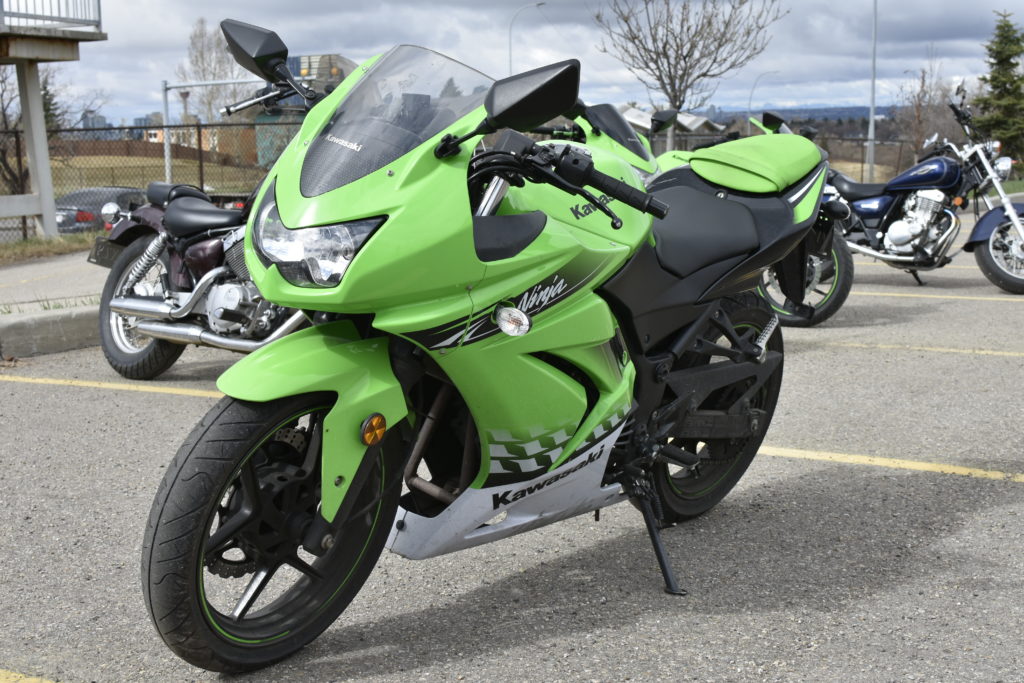
Finding a school
Generally in life, one size does not fit all.
In Edmonton and Calgary alone, there are over a dozen schools that offer motorcycle courses. If you’re new to motorcycling, I would definitely recommend that you contact schools of interest and ask questions such as:
- What concepts do they teach?
- How many students are in a class?
- What bikes does the school provide?
- What are the qualifications of the instructors?
Doing the legwork on finding the right school will ensure that you have a solid foundation to build your motorcycling journey on. I recommend that you stay away from schools with high student-to-instructor ratios, as one-on-one feedback is critical in the early stages of learning. Additionally, schools that use bikes that look scuffed, or aren’t mechanically sound, are a big red flag.
I chose Shifting Motorcycle School in Calgary because I liked the instructor, Ryan Cuddy, as well as the semi-private five-to-one student-to-instructor ratio. I also considered Little Johnny’s Motorcycle Academy in Calgary as well; they seemed well-informed and suitable for new learners.
Taking the course
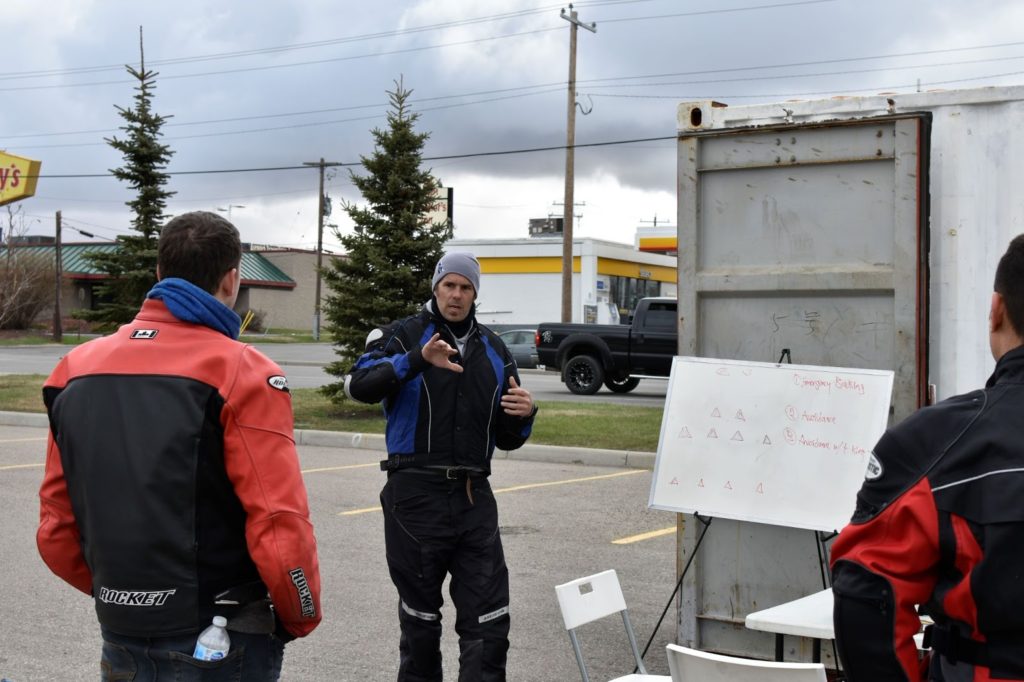
My course, taken with the Shifting Motorcycle School in Calgary, involved two back-to-back, seven hour days over the weekend, followed by a road ride. There was also a three hour Zoom classroom session.
On Thursday evening, I attended the three hour introduction to motorcycling session via Zoom. There, the instructor covered the basics of riding apparel, safe handling, functioning, and the theory-based content.
The hands-on portion of the course took place in a parking lot, running from 9 a.m. to 4 p.m. Throughout the course, Cuddy made it clear that baby steps and incremental improvements over the weekend were the goal.
The learning curve for motorcycling is steep. Whenever you ride, you have to worry about seven things simultaneously. These include the clutch (left handle lever), the throttle (right handle), the shifter (next to the left foot peg), the front and rear brakes and finally — the processes involved in keeping the bike upright. For those who don’t know, you have to shift your own gears on a motorcycle, like a manual transmission car! The process of learning how to shift gears on a motorcycle alone can take a day to learn properly.
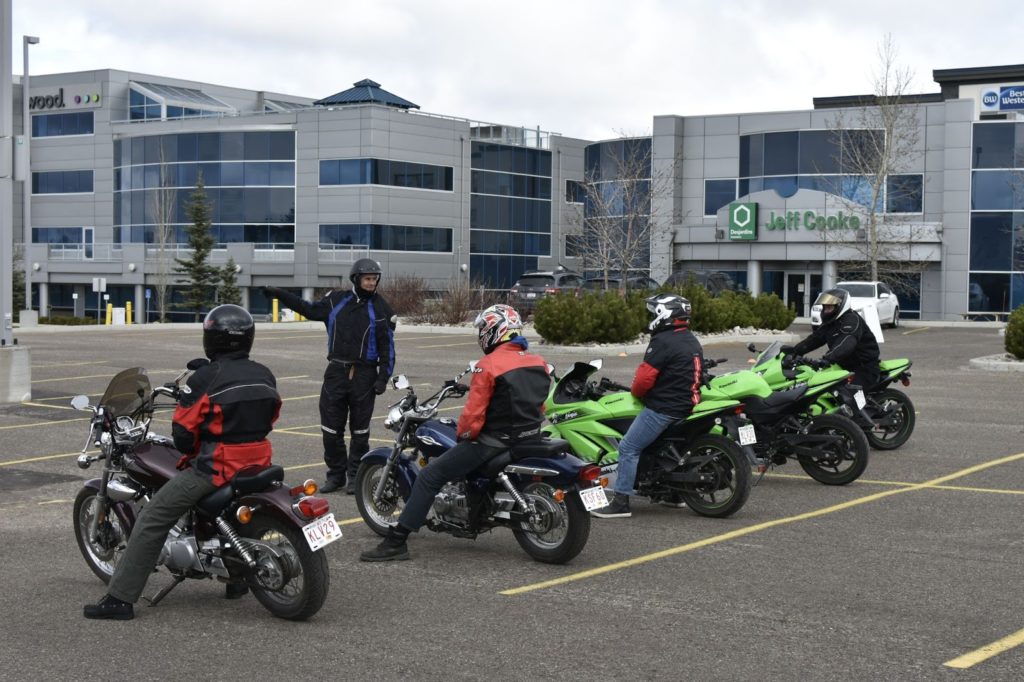
One of the focuses of Saturday was slow speed cornering. After getting the bike rolling, we would have the opportunity to come around a parking stall and practice applying the rear brake around corners. This is crucial for keeping the turning radius tight. We also did slow speed drills which included following a yellow line across the lot (which is a lot harder than it sounds), slaloms, doing circles around a set of cones, and finally a push steering exercise which taught us to somewhat counterintuitively “push” into the handlebar in the direction that we wanted to travel when at speed.
Even if you’ve never ridden a motorcycle in your life, by the end of Saturday, you will likely have a comfortable idea of how to use a motorcycle.
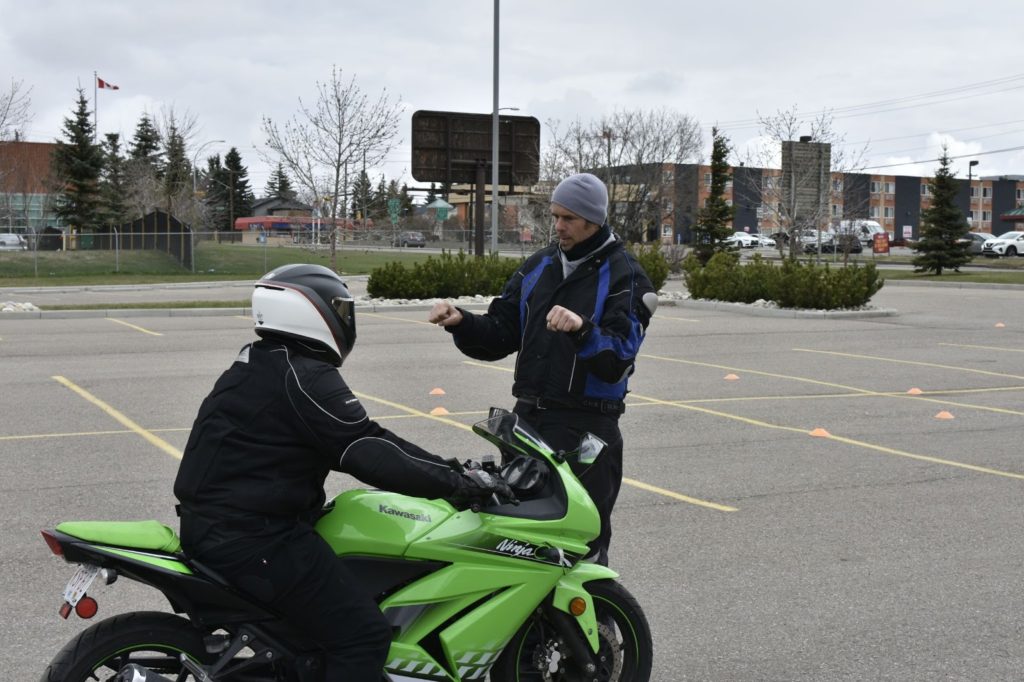
Things picked up Sunday when we put together what we had learned on Saturday into one coherent package. For example, on day one we learned how to push, steer, and move between cones at speed, whereas on day two, we added a braking component to the exercise to make things more challenging.
We were reminded of the importance of using one’s vision to scan ahead for any obstacles, or where we wanted to go when riding a motorcycle. The process of looking through a corner or ahead at any obstacles is so important as nearly 90 per cent of safe riding involves paying attention to your surroundings.
One of the most important skills I learned was safely emergency braking. This knowledge would be useful if you were riding behind a car that suddenly stops. To do emergency braking safely, you must roll off the throttle, apply the rear brake followed by a progressive squeezing of the front brake — all while holding in the clutch and keeping your eyes up to avoid obstacles. While it may sound easy on paper, I nearly did a power slide on this exercise as I inadvertently locked up my rear brake the first time practicing it!
Constant feedback proved useful in developing my knowledge. Since this was a small course, I always received one-on-one feedback from the instructor. For example, I had a tendency to look down as I applied my brakes, something Cuddy remedied through reminders.
The road ride
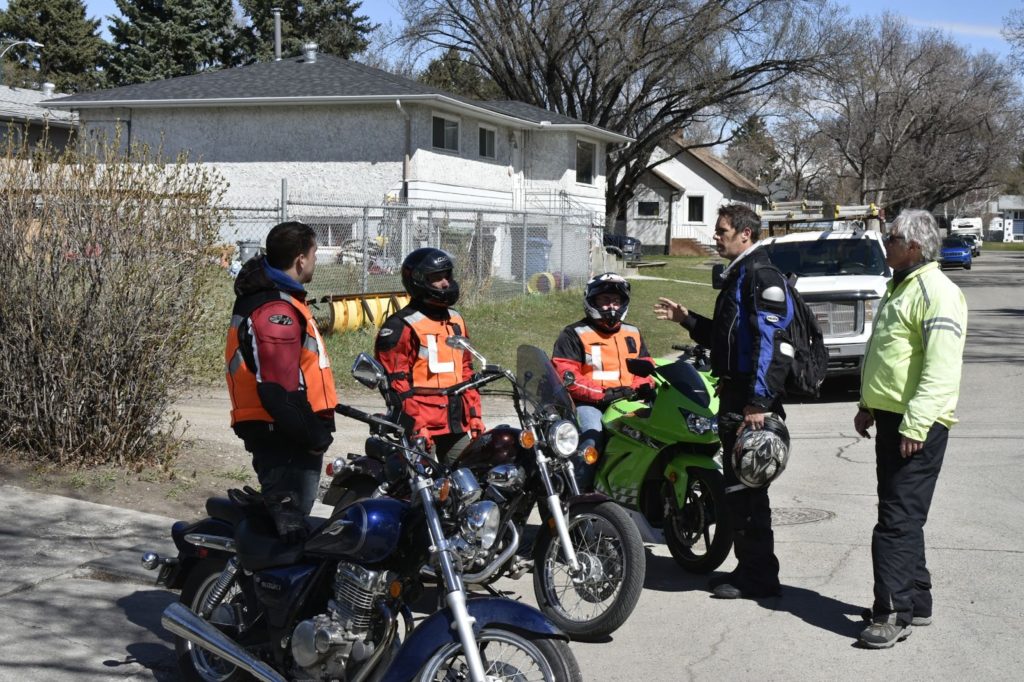
On Sunday afternoon, we took part in a road ride, solidifying all the skills we spent the past two days working diligently on. Riding a motorcycle on the road is a rush of adrenaline. It feels incredible to fly over the tarmac, keeping up with the cars all while feeling the rumble of the bike’s engine between your legs.
We started off on residential areas before transitioning into busier roads. For our safety, we rode in a staggered formation under the watchful eye of our instructors. One of the coolest experiences was riding the Crowchild Trail at 80 km/h with the engine roaring beneath me. It was incredible to ride on Memorial Drive, backdropped with downtown Calgary.
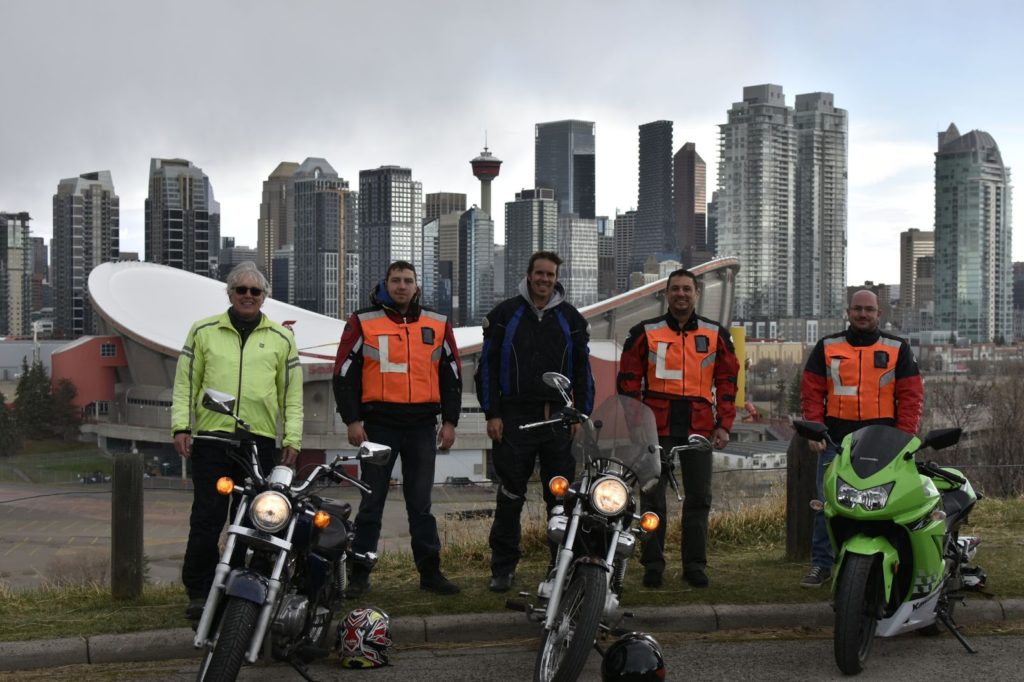
In closing, I had an incredible weekend learning how to ride a motorcycle. I spent a lot of time working on basic skills that when put together, allowed me to ride on some of Calgary’s busiest roads safely. If motorcycling is something you are interested in, I would definitely recommend trying out a course and seeing for yourself. You might fall in love with the exhilaration that motorcycling can offer.




